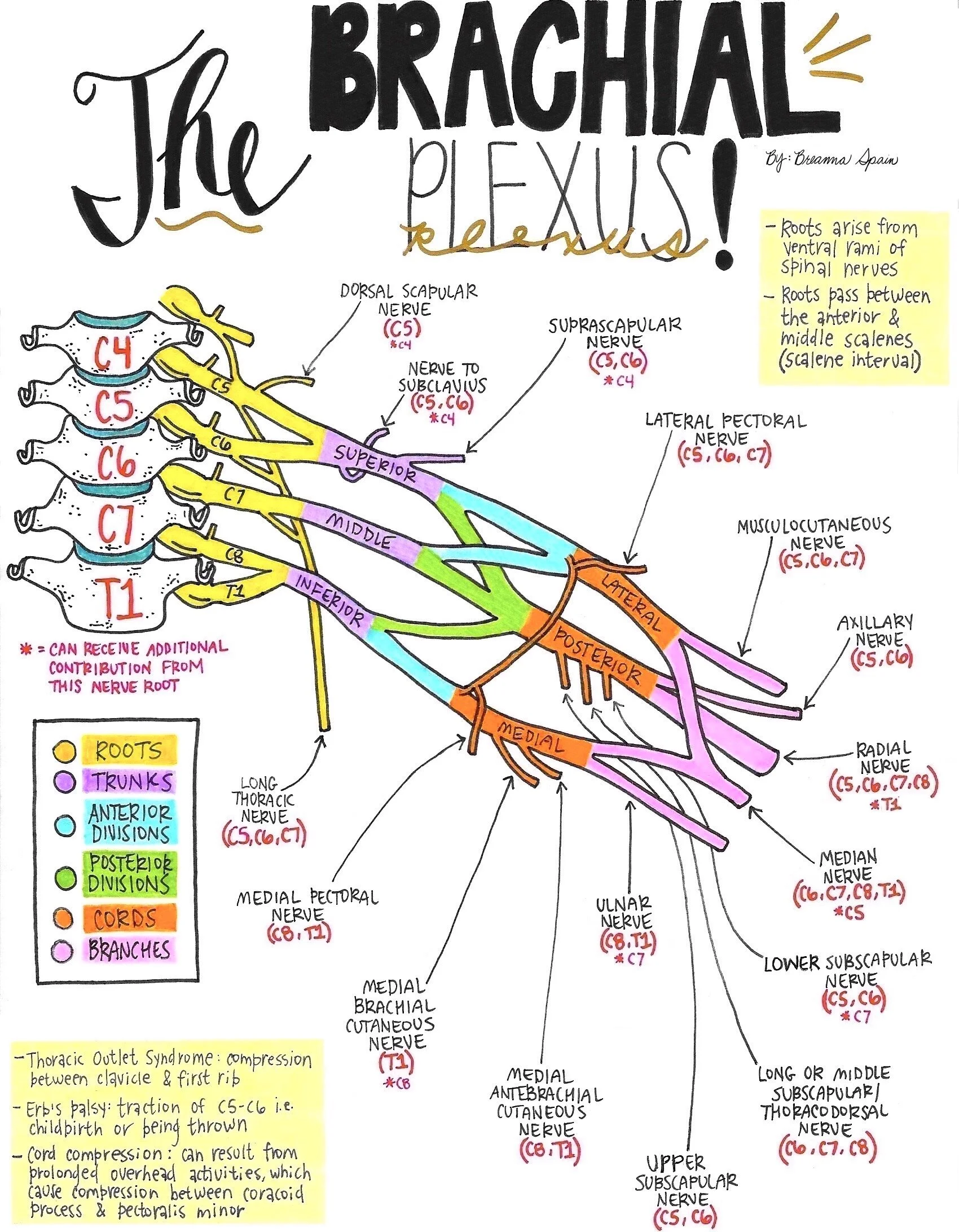Plexus brachial
Table of Contents
Table of Contents
If you’re interested in learning how to draw brachial plexus, you’ve come to the right place! Drawing anatomical structures can be daunting, but with the right techniques and resources, you can master this skill and add it to your repertoire. Whether you’re a medical student, artist, or simply someone who enjoys learning about the human body, knowing how to draw brachial plexus can be a valuable skill.
One common pain point when it comes to drawing brachial plexus is the complexity of its structure. It can be difficult to know where to start, which parts to emphasize, and how to create a visually appealing image. Additionally, some may struggle with memorizing the details of the brachial plexus and its related anatomy, which can make the drawing process even more challenging.
When it comes to drawing brachial plexus, the key is to break it down into manageable steps. Start by familiarizing yourself with the basic anatomy and structure of the brachial plexus, including its major nerves, branches, and connections. There are many online resources available, such as videos and images, that can help you visualize the brachial plexus and its course through the upper body.
In summary, to draw brachial plexus, start by studying its basic anatomy and structure, and then break it down into manageable steps. Use online resources and visuals to help you memorize the details, and practice drawing the brachial plexus regularly. With time and patience, you can master this skill and create stunning images of the human body.
How to Draw Brachial Plexus: Personal Experience
As a medical student, I struggled with memorizing the details of the brachial plexus and found it challenging to draw accurately. However, by breaking it down into smaller components and practicing regularly, I was able to improve my skills and create detailed images of this important anatomical structure. I recommend using visual aids, such as diagrams and videos, and taking the time to understand the connections between the nerves and muscles involved in the brachial plexus.
How to Draw Brachial Plexus: Tips and Techniques
When it comes to drawing the brachial plexus, one technique that can be helpful is to start with the larger nerves and then work your way to the smaller branches. It’s also important to pay attention to the connections between the nerves and the muscles, as this can help you create a more accurate and realistic image. Additionally, using shading and color can help to emphasize certain aspects of the brachial plexus or make it more visually appealing.
The Anatomy of Brachial Plexus
The brachial plexus is a complex network of nerves that originates from the spinal cord and supplies the upper extremities. It is made up of five major nerves, including the musculocutaneous, axillary, radial, median, and ulnar nerves. These nerves innervate various muscles in the arm and hand, providing motor and sensory function. The brachial plexus also includes several smaller branches and connections, which can vary between individuals.
Drawing Brachial Plexus For Medical Students
For medical students, drawing brachial plexus can be an important part of understanding the anatomy and its clinical relevance. One useful technique is to create a simplified diagram of the brachial plexus, highlighting the major nerves and their connections. This can help to reinforce the details of the structure and make it easier to visualize.
How to Draw Brachial Plexus: Practice Tips
Practice is essential when it comes to learning how to draw brachial plexus. Set aside time each day or week to practice drawing the brachial plexus, using various resources to guide you. You can use textbooks, online videos, and diagrams to help you visualize the structure and reinforce your understanding. Don’t be afraid to experiment with different techniques and styles, and remember to be patient with yourself!
Question and Answer
Q: What are some common mistakes to avoid when drawing brachial plexus?
A: One mistake is to overlook the importance of muscle connections and the role they play in the brachial plexus. Another is to focus solely on memorizing specific details without understanding the larger context of the structure.
Q: How can I improve my memory when it comes to drawing brachial plexus?
A: Repetition and regular practice are key to improving memory. Try drawing the brachial plexus from memory every day, and use mnemonic devices or visual aids to reinforce the details.
Q: Are there any online resources that can help with drawing brachial plexus?
A: Yes, there are many online resources available, including videos, images, and interactive quizzes. Some recommended websites include Kenhub, Teach Me Anatomy, and Draw it to Know it.
Q: What is the best way to approach drawing brachial plexus for beginners?
A: Start with the basics, such as the major nerves and their connections, and then gradually add more detail. Use visual aids to help you memorize the structure, and practice regularly.
Conclusion of How to Draw Brachial Plexus
Drawing brachial plexus can be a challenging but rewarding skill to master. By breaking the structure down into manageable steps, using online resources and visual aids, and practicing regularly, you can improve your skills over time. Remember to be patient with yourself and have fun with the creative process!
Gallery
How To Draw The Brachial Plexus | Physical Therapy Student, Physical

Photo Credit by: bing.com / brachial plexus draw choose board therapy step physical
How To Draw The Brachial Plexus In 10 Secs - How To Remember Anatomy

Photo Credit by: bing.com / plexus brachial draw remember anatomy
Drawing Brachial Plexus? - Simple Tips To Draw - Rish Academy

Photo Credit by: bing.com / plexus brachial
Nerve Drawings // The Brachial Plexus And Its Course Through The Upper
Photo Credit by: bing.com / plexus brachial extremity median limb radial axillary breanna breannaspainblog braquial plexo ulnar occupational nervos plexis musculos
How To Draw The Brachial Plexus | Study With An SPT

Photo Credit by: bing.com / brachial plexus







